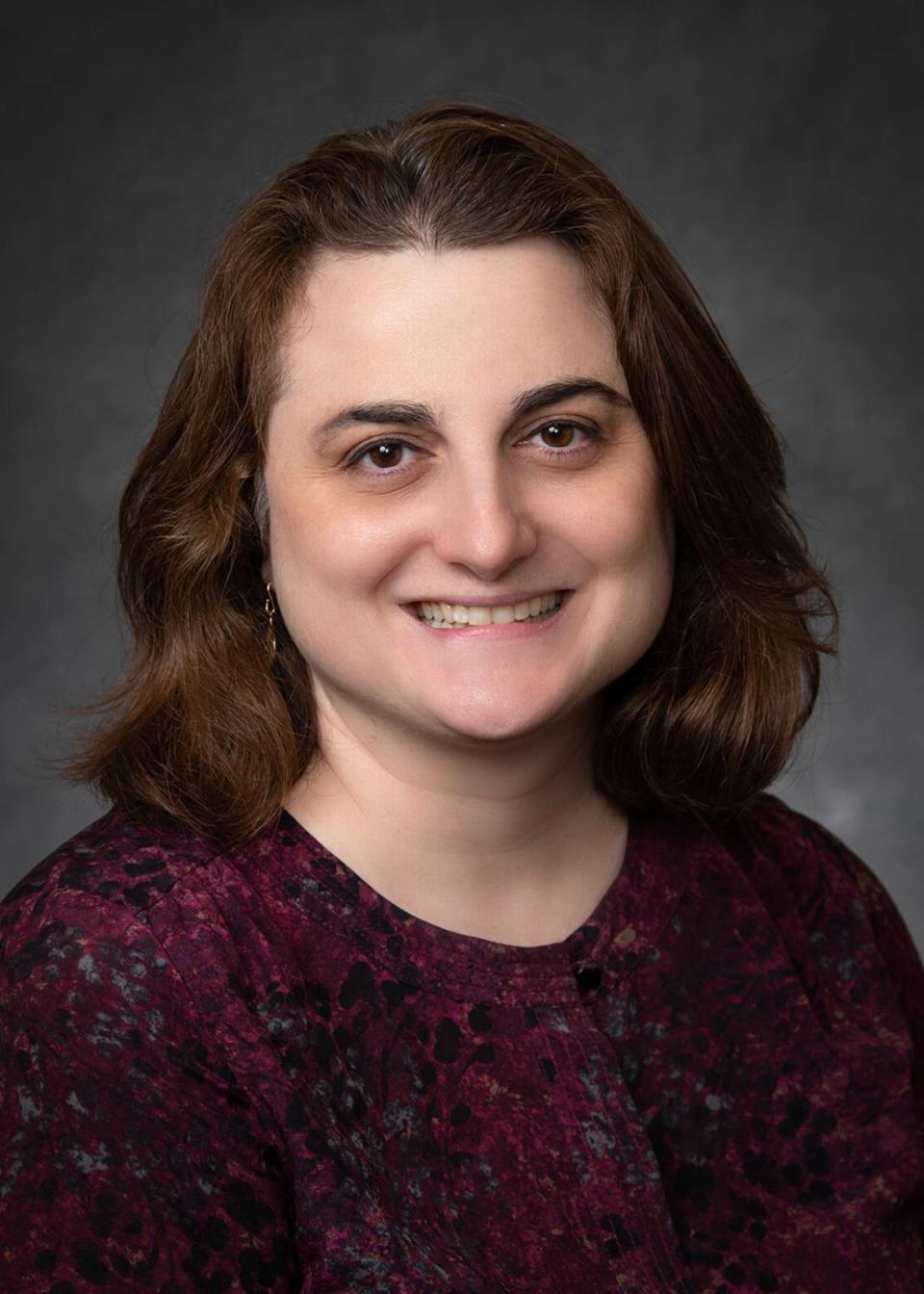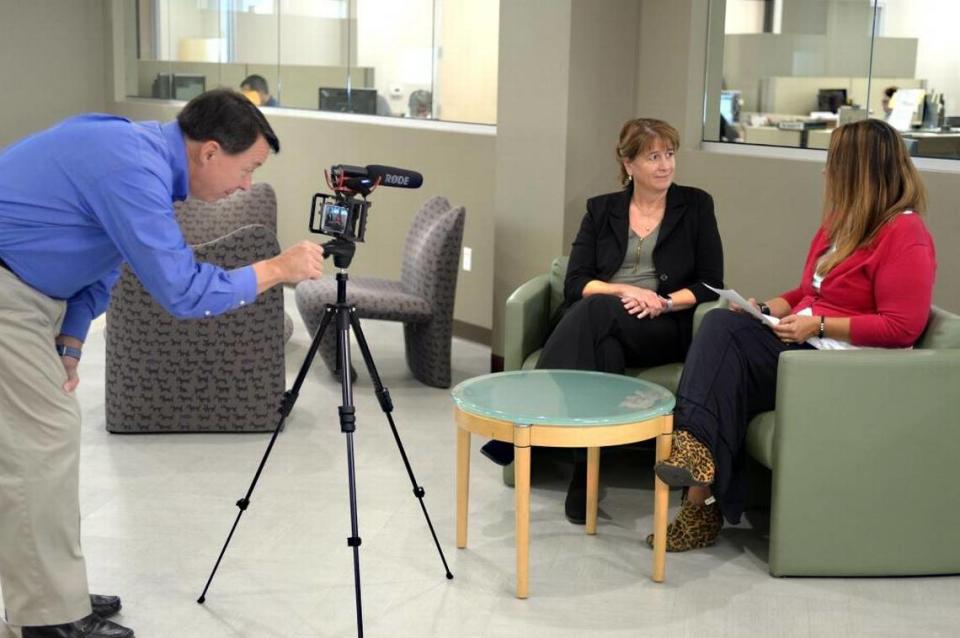COVID, deadly fungus, norovirus, avian flu — who would want this job? She did | Opinion
- Oops!Something went wrong.Please try again later.
Long hours, stress and threats during the COVID-19 pandemic drove half of public health employees in the United States from their careers, according to a new report in Health Affairs journal. Stanislaus County’s former public health officer, Dr. Julie Vaishampayan, endured verbal abuse from some audience members in rocky public meetings but muscled through until retiring late last year.
Dr. V’s assistant, Dr. Thea Papasozomenos (say papa-so-ZO-men-osse), had arrived here in 2018 for her first post-residency job. Newly politicized attention on a previously under-the-radar job did not deter her, and she became Stanislaus’ public health officer in December.

A Texas native, Dr. Papa, as some call her, explained her motivation and ongoing challenges to The Modesto Bee Editorial Board in a recent interview, edited here for space and clarity.
Q: Why choose a career in public health?
A: A lot of medicine is detail-oriented, in a silo. Public health is macro — it’s looking at the big picture. You’re able to look at the whole community, and I appreciate that.
Q: Tell us about Dr. V.
A: You could not ask for a better mentor. She had such a wealth of experience and knowledge. She was an infectious disease doctor, and I feel the community was so fortunate to have Dr. V at the helm during the pandemic.
Q: Grade your office’s response to COVID.
A: Sadly, we saw a lot of impact on schools, young kids socially and mentally affected by (lockdown) decisions. People of all ages had anxiety. We have to keep this in mind and find ways to mitigate against that.
It was very stressful in public health, people working long, crazy hours. We asked a lot of them, and they stepped up to the plate, so I’m proud of what we as a public health department did.
Q: Does the political nature of your job give you pause?
A: We work with elected officials, other representatives and leadership of the community, community members, hospital executive teams and staff, so politics was always a part of this job. Since COVID, people seem more aware of public health. Unfortunately, there also is more mistrust. People are more skeptical. We have to find ways to bring back the public’s trust.
Q: How did the job become such a lightning rod?
A: You become the primary interface, so you’re the one they direct their anger towards. Dr. V was the face of public health. If people are frustrated with something, they put that frustration on that person even if that person is not the source of the frustration.

Q: You applied even after seeing abuse heaped on her?
A: It was the natural progression to my training and experience. Anytime you go for a job, you weigh the pros and cons and do what you think is right.
Q: Did you feel supported by those who enforced your office’s COVID policies?
A: We had a very good relationship with (county) leadership. It wasn’t fractious at all. It was more of a unified approach.
Q: What cultural differences between California and Texas did you see during COVID?
A: This is mainly a blue state, but you’re going to find pockets of red here, and different approaches. Cities in Texas are almost uniformly blue. So there are going to be different mindsets. There may be more pushback (to science) in Texas, and more frustration.
Q: What should we know about COVID today?
A: In 2020, we had no vaccinations; the only thing we had was face masks. Now we have vaccines, therapeutics, monoclonal antibodies and antivirals, and a lot of people were infected so there is more natural immunity. But we accept that this is going to be with us; it’s not going away.
Typically you have winter viruses all concentrated in one season. (COVID) hasn’t followed that pattern. What’s interesting to me is it never goes down to a negligible level; a baseline amount is always circulating. There are still people with it in hospitals. My concern is, is it going to surge again?
(We also deal with) Candida auris (a deadly fungus), and we’ve had four (norovirus) outbreaks recently.
The RSV season for the most part is past, and influenza pretty much went down. Of the three, COVID is still out there.
Q: What keeps a public health officer up at night?
A: The avian influenza or H5N1 you see in the news, which spreads among birds and we’ve seen sporadically in humans, has a high mortality rate, over 50%. It doesn’t transmit well, but when it does it can be very serious, and we’ve seen some crossover to other animals like minks in Spain. Can it figure out how to spread to humans? God forbid, then you would have human-to-human transmission, and that would be a bad situation.
Q: Do you deal with reports of tainted food?
A: If there is a food-borne illness, we partner with Environmental Resources to address it.
Q: Is the threat of gun violence a matter of public health?
A: I would say so. These events are very disconcerting and heart-breaking. I don’t know what you could tell those families. There definitely is a mental health component to these events. I don’t know what all the answers are. Obviously we need to find ways to strengthen our mental health resources.
Q: How will you interact with media?
A: It’s not my natural tendency. I’m kind of a shy person. But I understand that much of what we do is to communicate with the public, so we have to work with the media; there is no way around it.

